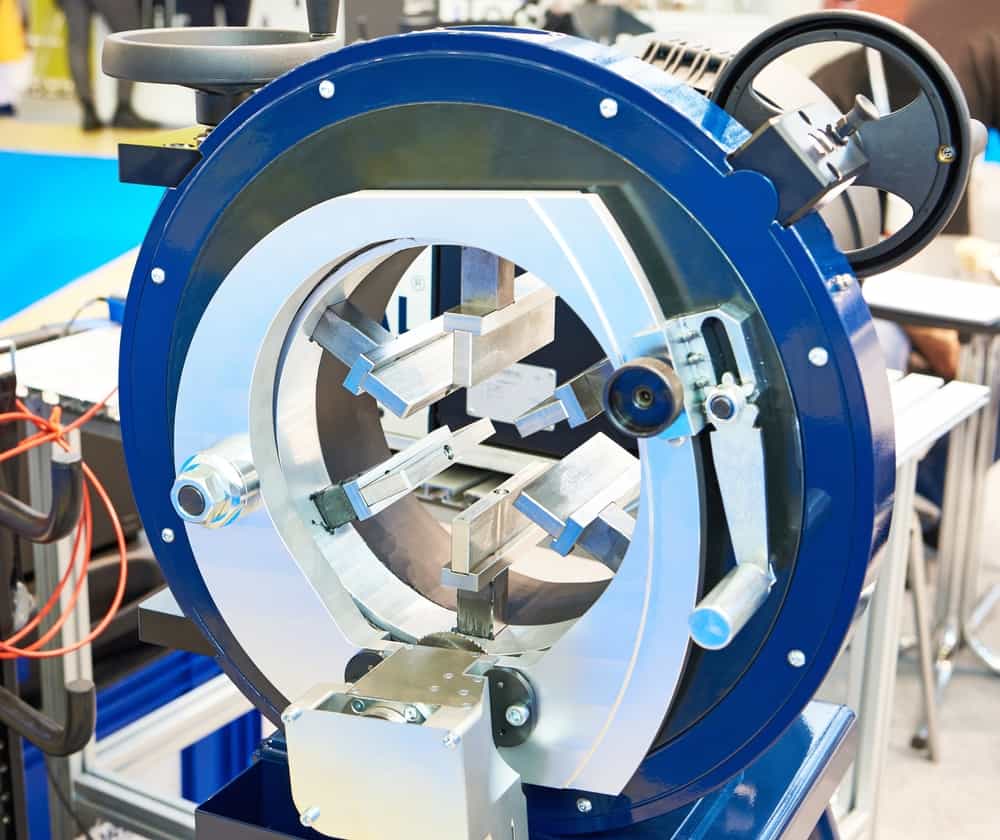
The visual inspection of a pipe or tube weld, conducted externally or internally with a camera, can help ensure weld quality. Boroscopy represents a non-destructive testing technique that improves the visual inspection of welds on the internal surfaces of narrow pipes, tubes, ducts, large tanks, and difficult-to-reach chambers.
With a special probe that transmits videos and still images of weld joints directly to an LCD/LED monitor, a borescope can detect and examine surface cracks, corrosion, contamination, surface finish, and surface weld discontinuities. However, boroscopy can not evaluate the depth of weld cracks and is only effective at detecting surface macroscopical flaws.
Orbital welding and boroscopy can help manufacturers achieve basic quality assurance (QA) of welds across industries without requiring costly teardowns during an inspection.
Application of Boroscopy Across Industries
Borescopes can help detect common weld flaws during sanitary pipe and tube welding. These flaws include root fusion, cracking, porosity, undercutting, and root concavity. Below, we discuss pipe and tube welding requirements and regulations across key industries and how implementing orbital welding and boroscopy can help manufacturers achieve their desired weld quality.
Oil and Gas
Every pipeline weld is a critical link and demands regular inspection. As a non-destructive testing (NDT) method, visual inspections through borescopes provide a cost-effective option for detecting hydrogen-induced cracking, internal corrosion, external corrosion, and other common welding defects in piping systems. The borescope probe can be pushed or lowered into a pipe section that is tens or hundreds of feet long to view a particular weld up close and produce live video feeds to the device’s mounted display. Additionally, the portability of borescopes makes it easier for operators to conduct visual inspections of pipelines in remote locations.
Nuclear Power
In nuclear power plants, borescopes enable rust and corrosion (as well as cracking, pitting, and other weld defects) detection in small-diameter pipes during reactor vessel and system construction. Orbital welding accommodates corrosion-resistance materials such as stainless steel and titanium that can withstand the effects of extreme temperatures and radiation. The cameras mounted on long, thin, and articulated wires of a borescope allow technicians to stay away from radiation zones while conducting a visual inspection of system integrity.
Pharmaceutical
In the pharmaceutical industry, QA inspectors need to inspect the welds as they are completed during process piping system installation. The ASME BPE standards require 100% visual inspection of the outside of the weld with a minimum of 20% visual inspection of the inside or product contact side of the weld. Visual criteria for orbital welds were developed to minimize the contamination risks. Any undetected weld failures—such as an unpenetrated weld, misalignment of weld components, or discoloration of welds from poor purging during the weld sequence—can prove cost-intensive to correct.
Borescopes used for these weld inspections are flexible and referred to as fiberscopes. Implementing orbital welding and boroscopy in such installations ensures that the welded joints are free of defects, such as cracks or poor root fusion that can form traps or crevices or Inner Diameter (ID) concavity and inhibit cleaning.
Food Processing
FSMA sanitary standard compliance is paramount In the food processing sector. Piping systems are regularly updated, and welding joints must be 100% penetrated to avoid contamination risks. As a result, test coupons are performed routinely through orbital welding and boroscopy to identify acceptable welds with the surface roughness of the metal equal to or less than 30 micro-inches.
Automated GTAW orbital welding is best suited to address industry-specific welding standards that demand minimal or zero scope of human error. Automated weld head control in GTAW welding offers high-quality, consistent, and strong weld beads, while the remote monitoring feature provides easy access to tight spaces in piping systems.
Ensuring Quality Welds Through Automated Orbital Welding and Boroscopy
When selecting a borescope, image quality and access are the key features that can impact the inspection of orbital welds in high-spec projects. Inspecting welds in small-diameter sanitary or other high-purity piping requires a highly flexible borescope that can make sharp bends and offer a 360-degree view of the entire weld.
Arc Machines, Inc. offers advanced custom weld heads and automated orbital welding equipment custom-engineered to suit specific applications while facilitating the integration of orbital welding and boroscopy to ensure quality welds in low-tolerance environments.
Arc Machines, Inc. provides a range of advanced weld heads for TIG stainless steel pipe welding. For inquiries regarding our products, contact sales@arcmachines.com. For service inquiries, contact service@arcmachines.com. Contact us to learn more about our orbital welding solutions.




